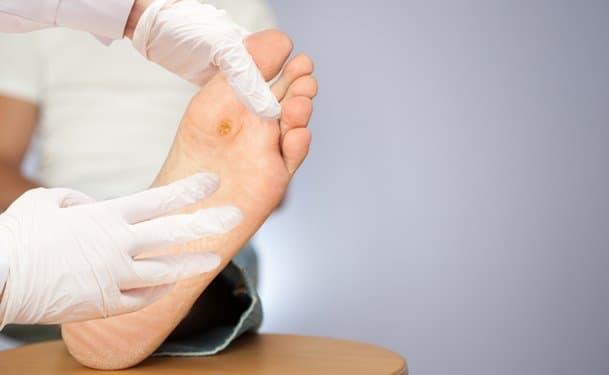Wounds can be divided into wounds that heal within ± 12 weeks and hard-to-heal wounds (wounds that do not heal at all or only after a very long time). Examples of hard-to-heal wounds or chronic wounds are: diabetic foot ulcers, venous leg ulcers, pressure ulcers, burns and infected postoperative wounds.
Chronic wounds pose a major challenge to patients, healthcare providers and the global healthcare budget. These wounds affect millions of patients, a number that is increasing due to the aging population and the increasing incidence of diabetes, and cost billions of euros annually. Chronic wounds have a huge impact on the quality of life and the chance of survival of the patient.
Infection is one of the most common complications of hard-to-heal and non-healing wounds. Infection and colonization with bacteria form an important barrier to healing for all chronic wounds, regardless of the cause of the wound.
Diabetic foot ulcers

415 million people are diagnosed with diabetes worldwide and this number rises every year. Diabetes is associated with peripheral neuropathy, where nerves become damaged. People who develop neuropathy don’t feel pain when they are injured, so they may not notice soft tissue damage in the foot until the damage is quite extensive. Many of these people also have peripheral artery disease (PAD) as a result of poor blood circulation to the legs. PAD reduces a person’s ability to fight infection and puts them at a higher risk of developing foot ulcers. About 15% of people with a diabetic foot ulcer will face an amputation because of an infection or other complications.
Promising results of PLASOMA cold plasma treatment on wound healing: please find them in our clinical data and publications.

